Alonzo Mourning trade changed Charlotte Hornets. He would’ve stayed for ‘a lot less money’
- Oops!Something went wrong.Please try again later.
- Oops!Something went wrong.Please try again later.
Alonzo Mourning would have become the greatest player in Charlotte Hornets history — if he had only stuck around.
Mourning played his first three NBA seasons with Charlotte after the Hornets drafted him No. 2 overall in 1992. He quickly turned into an intimidating, 6-foot-10 star for a Charlotte team on the rise. His scowl could scare you. His dunks could dent the hardwood. But a salary dispute led to the Hornets trading Mourning in November 1995 to Miami, where he became an even bigger star, won an NBA title in 2006 and eventually made the Naismith Memorial Hall of Fame in his first year of eligibility in 2014.
For his “Sports Legends of the Carolinas” interview with The Charlotte Observer, we met Mourning in Miami, where he still lives and works for the Miami Heat, now as the team’s vice president of player programs.
Mourning, 54, discussed his years in Charlotte in detail and said he wanted to stay in Charlotte badly enough that he would have given the Hornets a substantial financial discount if they would have valued him correctly and kept him.
“I’m going to be extremely transparent to everybody out there,” Mourning said at one point in the interview. “Listen, I was willing to take a lot less money than I received in Miami.”
Mourning also discussed his life-threatening kidney disease and subsequent transplant in 2003, as well as his memory of making the greatest shot in Charlotte Hornets history in 1993. This interview is edited for clarity and brevity. A fuller version is available on the “Sports Legends of the Carolinas” podcast.
Scott Fowler: Tell me about growing up in Virginia.
Alonzo Mourning: I was born in Norfolk. My mom had five sisters and five brothers. And my dad had two sisters. So we had a pretty big family. At 12 years old, I moved to Chesapeake, Va. My mom and dad ended up getting a divorce and they went their separate ways.
They had some serious issues at that time. So I had to make some decisions for myself. I fell into the foster care system and got picked up by a woman by the name of Fannie Threet. Very angelic woman. Fostered 49 kids in her lifetime. ... Ms. Threet took me in. ... I went to Indian River High School and ended up becoming the No. 1 high school player in the country.
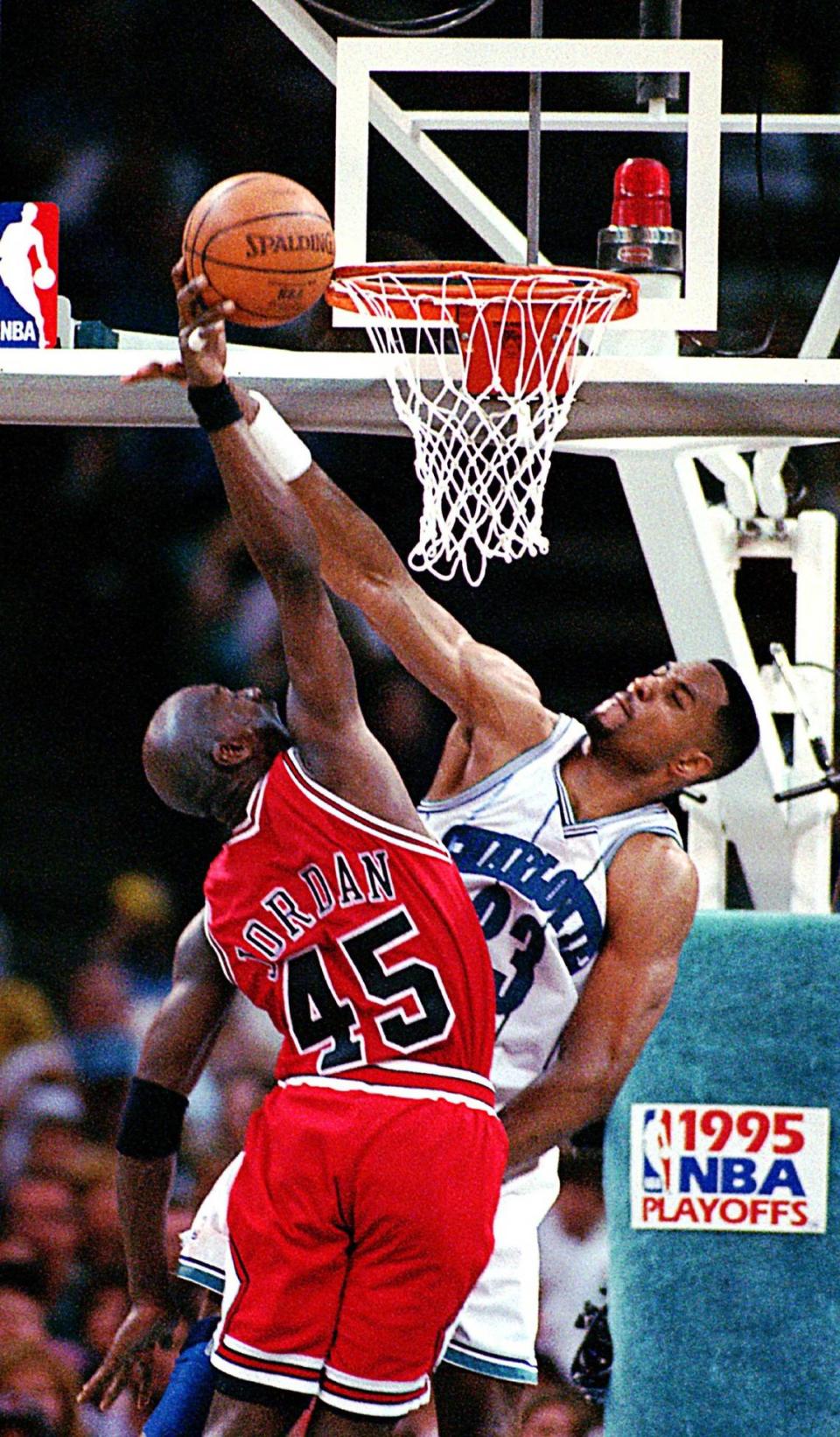
And a lot of that was due to Fannie’s tutelage, helping me understand the responsibilities of being a man. She’s a very faith-based woman. She instilled that in me, as well as understanding the importance of the blessings that God has given us on a regular basis, and appreciating that, and doing something with your blessings by blessing others. And she was a retired schoolteacher. So education was a priority.
SF: You went to Georgetown for college. Was that a difficult choice?
AM: No, it was not. I narrowed my list down to five schools: Maryland, Virginia, Georgia Tech, Syracuse and Georgetown. All great universities, and all great basketball programs at that time.
Big John Thompson, God rest his soul, he wanted to be the last to make his pitch. So all the other coaches came. (Maryland’s) Bob Wade, (Georgia Tech’s) Bobby Cremins, (Virginia’s) Terry Holland, (Syracuse’s) Jim Boeheim. They all said, “Hey, we’re gonna give him this and he’s gonna start.” Just talking about all these different accolades I was gonna receive without even having to work.
So Big John came, and he looked Ms. Threet straight in the eye and said: “Look. He’s got to work for everything he gets. If he wants to start, he’s got to earn it. But I’ll promise you this: If he comes to my university, he’s gonna graduate.”
That put her over the top. She looked at me and she’s like: “I know where you’re going: You’re going to Georgetown.”
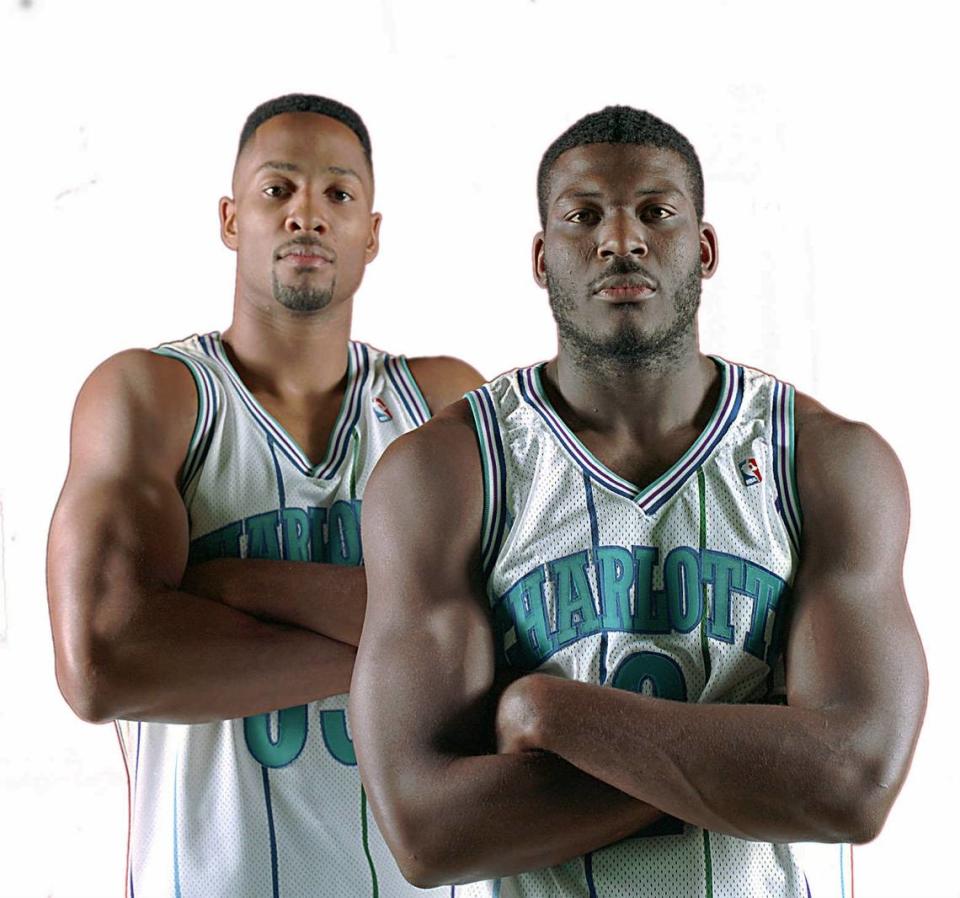
SF: The Hornets drafted you in 1992. What were your impressions of the Hornets before you got here?
AM: Exciting team. The colors? Very vibrant.
People were attracted to the “new kids on the block.” New franchise. Grandmama (Larry Johnson). Little Muggsy (Bogues). And I was like: “Wow, I can help that team.”
SF: In 1993, you hit a jumper from the top of the key to win a playoff series against the Boston Celtics in Charlotte. This continues to be known as the greatest shot in Hornets history and is immortalized in a museum exhibit in Charlotte. What do you remember about it?
AM: I remember it clearly. Nothing foggy about it. The play was drawn up either to get the ball to LJ or Dell (Curry). Dell inbounded the ball and he was supposed to get it again, if we couldn’t get it to LJ. And when I caught it, I was wide open. And the clock was running down.
It was kind of instinctual, you know because I wasn’t known for my jump shooting at Georgetown. But when I got to the league, I started expanding my game out a little bit so those mid-range shots were shots that I was very confident in taking, because I used to shoot them in practice.
So I caught it, and pretty much just let it fly. I thank the basketball gods that it went in the hole.
SF: What was the aftermath like?
AM: It was such an exhilarating moment. Not only was I happy I made the shot, but I was happy for the fans. You could just feel — no pun intended — but you could feel the buzz. It was just so exciting, and I’m happy to have been a part of a small part of Hornets history. ... It was an incredible ride.
I wish that was something that we could have grown because I felt like we had a nucleus of guys. All you had to do is just put more pieces around us, and some special things probably could have happened. But basketball management didn’t see it that way.
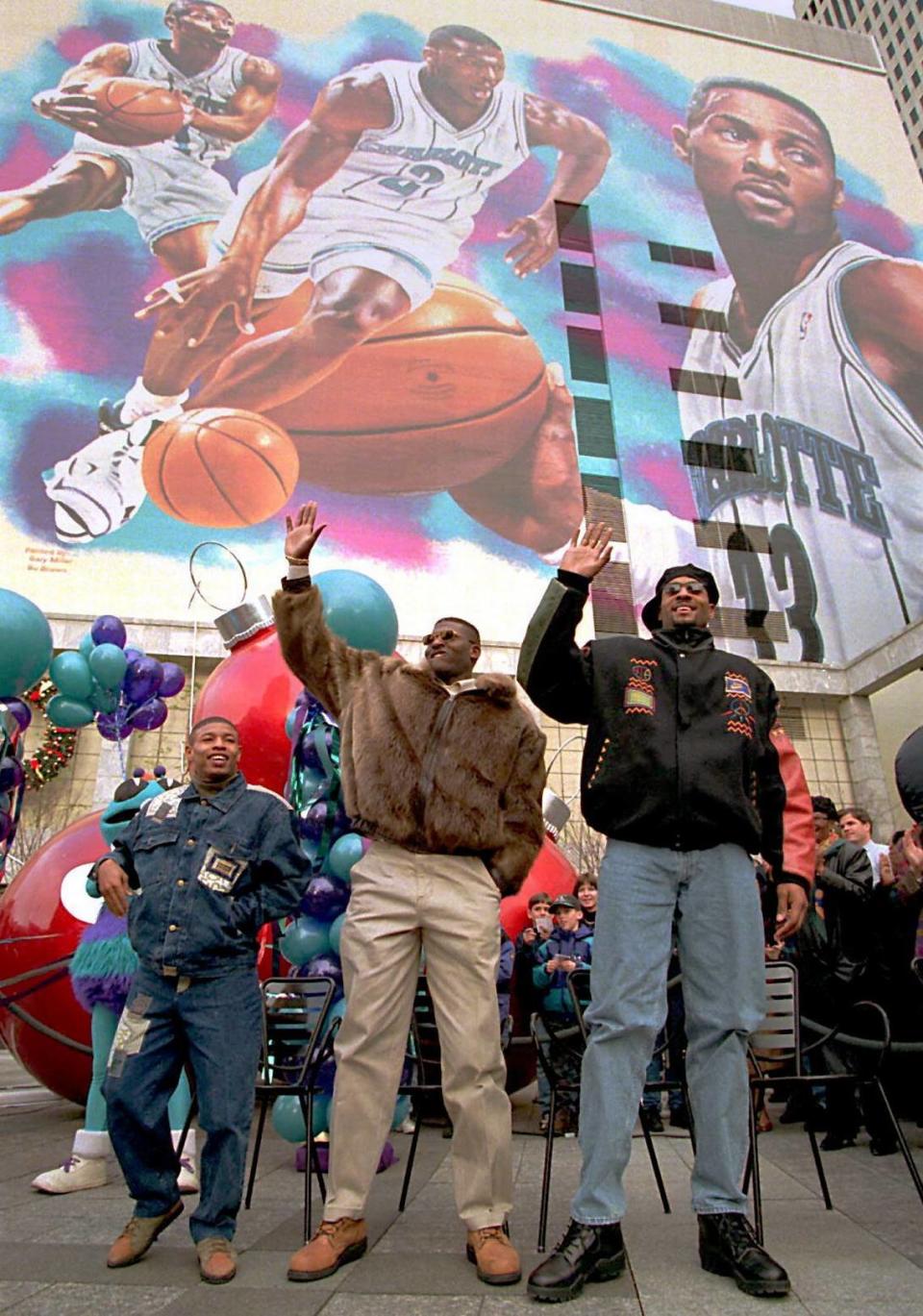
SF: Most Hornets fans consider you the great player that got away. Was it basically that they had paid Larry Johnson so much (Johnson signed a 12-year, $84-million contract in 1993 with the Hornets that at the time was the largest contract in pro sports) that they weren’t willing to pay you enough?
AM: They didn’t want to make the investment. Yeah. And what’s so crazy is — I’m gonna be extremely transparent to everybody out there. Listen, I was willing to take a lot less money than I received in Miami. ... But when I was told by management that I wasn’t worth what I was asking?
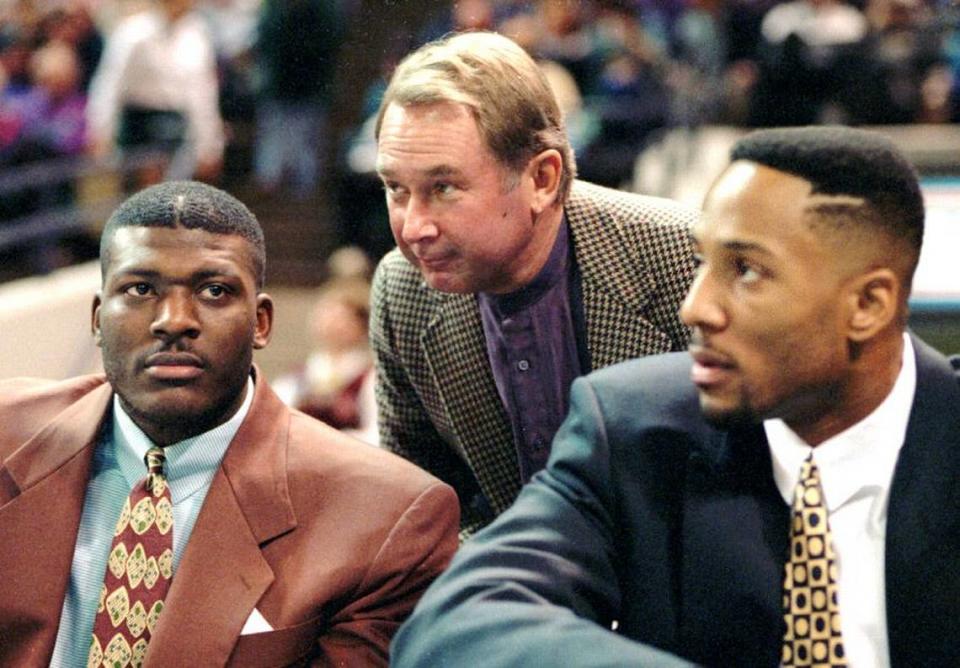
My agent at the time, David Falk, said, “You gotta go. For them to even say that was insulting. Don’t even consider it anymore. You’ve done enough on your part. Because you are willing to take less.”
I actually wanted to take a lot less.
SF: Really? Why would you have done that?
AM: Because I wanted to stay in Charlotte. I did. I mean, I wanted it. I loved the city. I loved the fan base. It was close to Virginia. It was very close to my home. So I had family members and friends driving up, it was like a five-hour drive. So it was perfect.
But I’m gonna tell you. I have a calendar and I’m scheduling my everything, but God coordinates my steps. ... I miss Charlotte. I love Charlotte. But Miami was a perfect fit for me. It really was.
I had a perfect basketball architect in Pat Riley. He had so many similarities to John Thompson. Defensive-minded. All about preparation. It was like a match made in heaven.
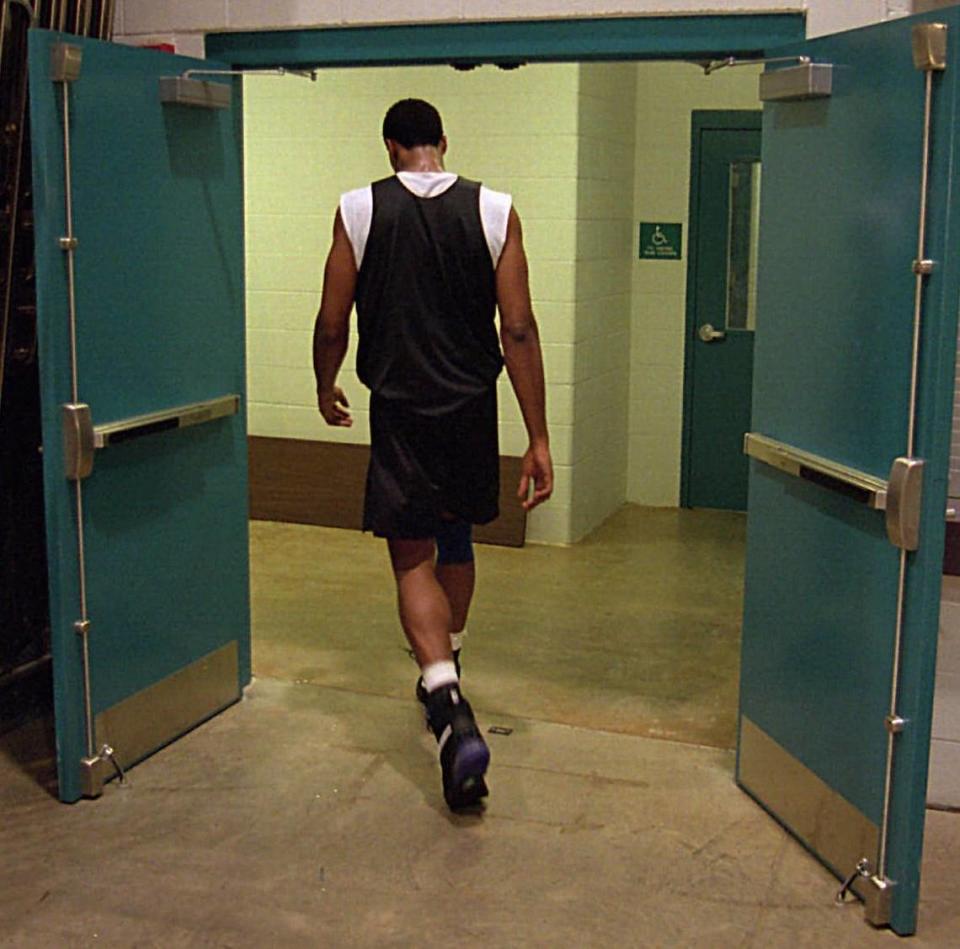
SF: What was your biggest highlight playing for the Heat?
AM: The one that stands out the most is June 20, 2006 (the day Miami beat the Dallas Mavericks in the NBA Finals) ... the first championship in franchise history. To be a part of that and how we did it — being down 0-2 in the Finals and then to come back and win it.
SF: Shaquille O’Neal was drafted No. 1 in 1992. You were picked No. 2. And you ended up teaming up in Miami. How’d that work out?
AM: For us to be two alpha males coming into the league, butting heads against each other for years and years — we would have never thought in our wildest dreams we would be teammates and would be winning the championship. The year before that we had Christian Laettner. He was the third pick (in 1992). I’d be willing to bet that’s probably the first time in the history of the NBA that the first, second and third pick of the draft were on the same team together.
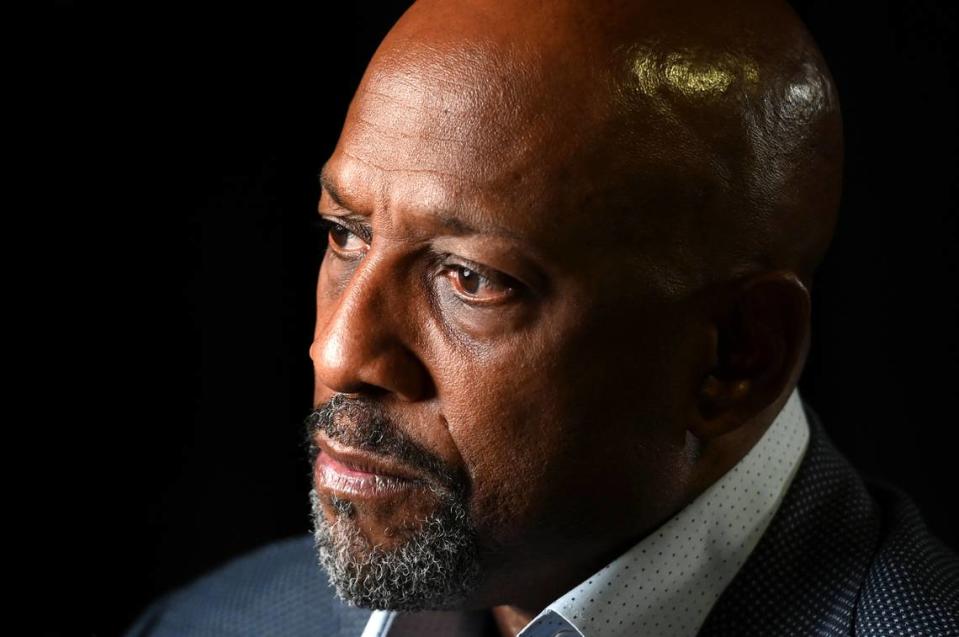
SF: It’s a miracle you played in that series at all, because you did so less than three years after a life-threatening kidney disease that required a kidney transplant and forced you to temporarily retire.
AM: Yes. A health-related issue that came out of nowhere. Genetic issue. Focal segmental glomerulosclerosis. It scars the filters of the kidney — slowly. You lose kidney function and ultimately you need a transplant. At that particular time I was diagnosed, I was on top of the world. I was first-team All-NBA. We had just won the gold medal (for the U.S. in 2000). I was Defensive Player of the Year. I was an all-star. I had just witnessed the birth of my second child.And everything came crashing down. ... I didn’t ask God to heal me. I just said: “Give me the direction I need. Because I’m lost right now.”
And I understood the reason why I went through what I went through. I feel like I’m still inspiring people, when I speak to people who are going through kidney-related issues… I was able to go back out there and play and win a championship with a transplant. It inspires people when they see other people do it.
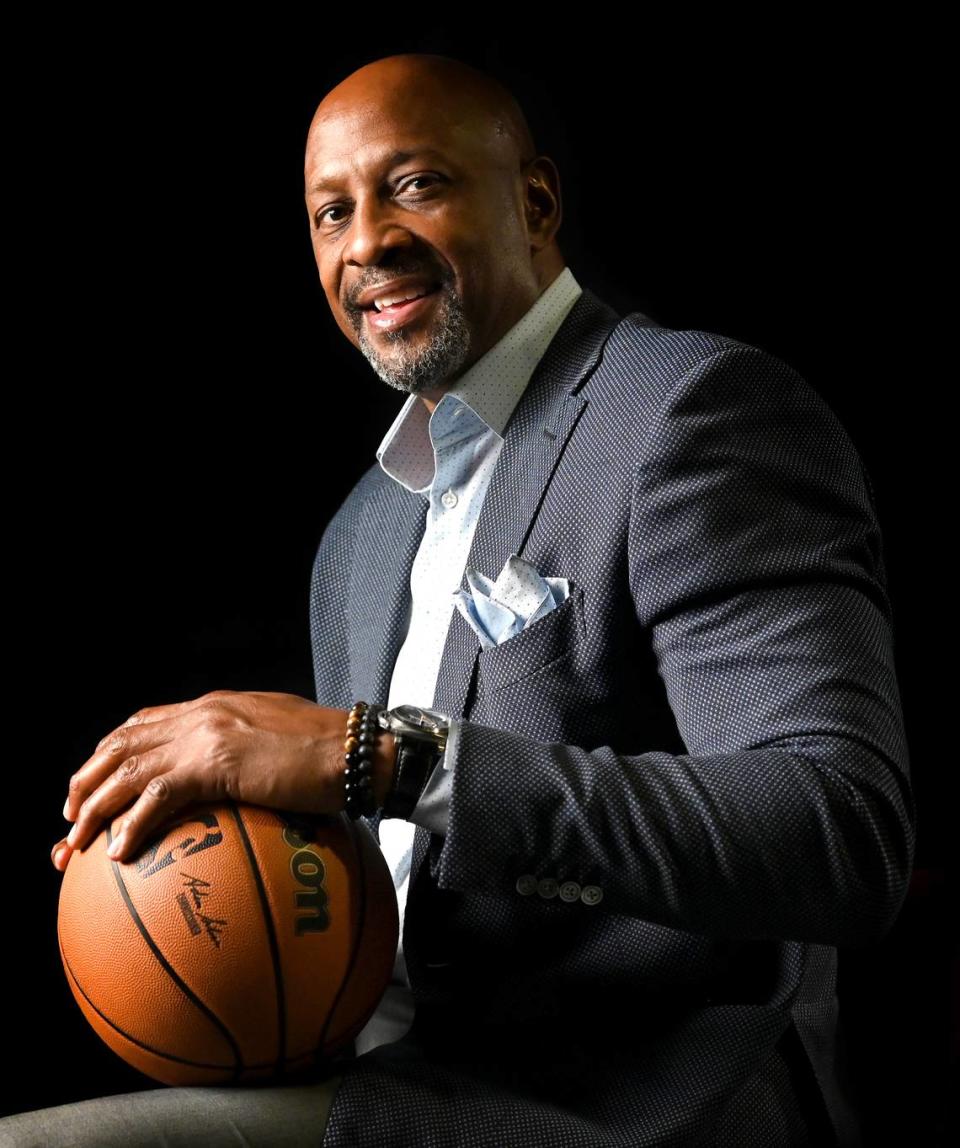
SF: You barely knew the cousin who gave you his kidney, right?
AM: Yes. I was given the gift of life by Jason (Mourning’s second cousin, Jason Cooper). We just celebrated 20 years post-transplant in December 2023. We had a huge dinner down here (in Miami). It was fun. ... As far as knowing him: I told you I had a big family. Jason was my grandmother’s brother’s son — so, a second cousin. The last time we had seen each other was 25-27 years prior. We were babies. ... (Cooper saw a report of Mourning’s desperate need for a kidney on TV, then told Mourning’s father he wanted to help). It was crazy. ... Out of all the people that got tested (for a possible transplant), he was the one they chose.
SF: You’ve got a very active charitable foundation in South Florida. Why?
AM: When I came here, we were playing in the old arena and it was about five blocks from here, closer to Overtown (a neighborhood of Miami). I had just signed a $100-million contract and I had to drive through Overtown at that particular time to get to work. And I would see the deplorable conditions. And I would see trash in the streets. I educated myself on the statistics in the community, you know, the drug abuse, the violence. Two out of every 12 kids graduated from high school.
And I said, “Enough.”
I’m not gonna sit here in this town, make this place my home and sit there and look at it and not do anything about it. I have to be an active participant and be a beacon of light for this community. I got to help change the narrative. And so now we’ve got a $22 million, 56,000-square feet facility in the Overtown community providing services free of charge, for children and families in their community.
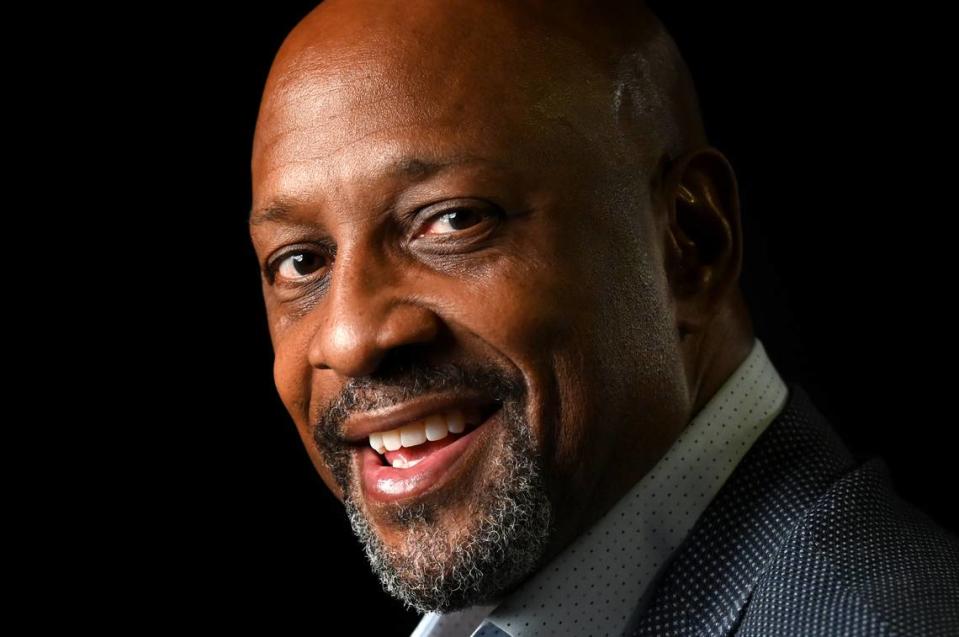
SF: What, to you, is the most important part of life?
AM: Giving back, man. We’re here to serve, not to be served. ... You don’t have to have a lot to do it. It’s your time. Showing love and support. Be a positive influence to a child.
Because I look at kids as messengers to a future that we won’t see.
We’ve got to make life better for somebody else, because they won’t forget that. And then they’ll do it for somebody else, and then they won’t forget, and they do it for somebody else. ... It’s just so rewarding to know that these kids (who have benefited from his foundation) are going to go out and they’re going to serve, just because we have prepared them to do so.
So that’s the difference. Service.
For a fuller version of this interview in podcast form, go to “Sports Legends of the Carolinas,” wherever you find your podcasts, and search for the Alonzo Mourning episode.
Previous “Sports Legends” interviews with guests like Richard Petty, Steph Curry, Roy Williams, Mike Krzyzewski, Jake Delhomme, Bobby Richardson, Thomas Davis and Dawn Staley are also available on the “Sports Legends of the Carolinas” podcast. New “Sports Legends” episodes debut every 2-3 weeks throughout 2024. The “Sports Legends” coffee-table book came out in late 2023 and is now available at SportsLegendsBook.com.


